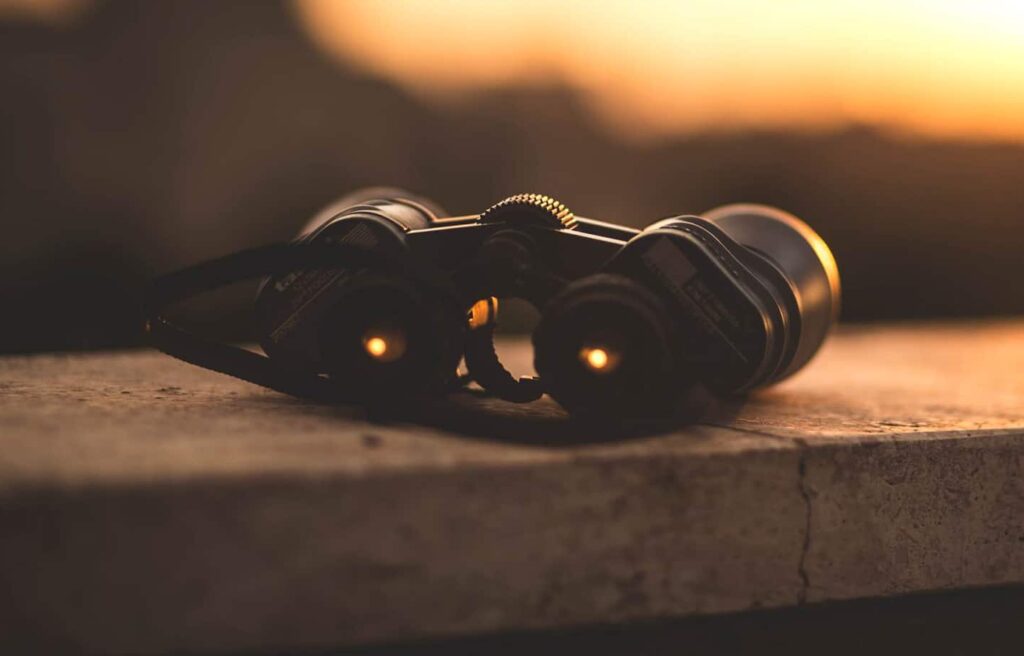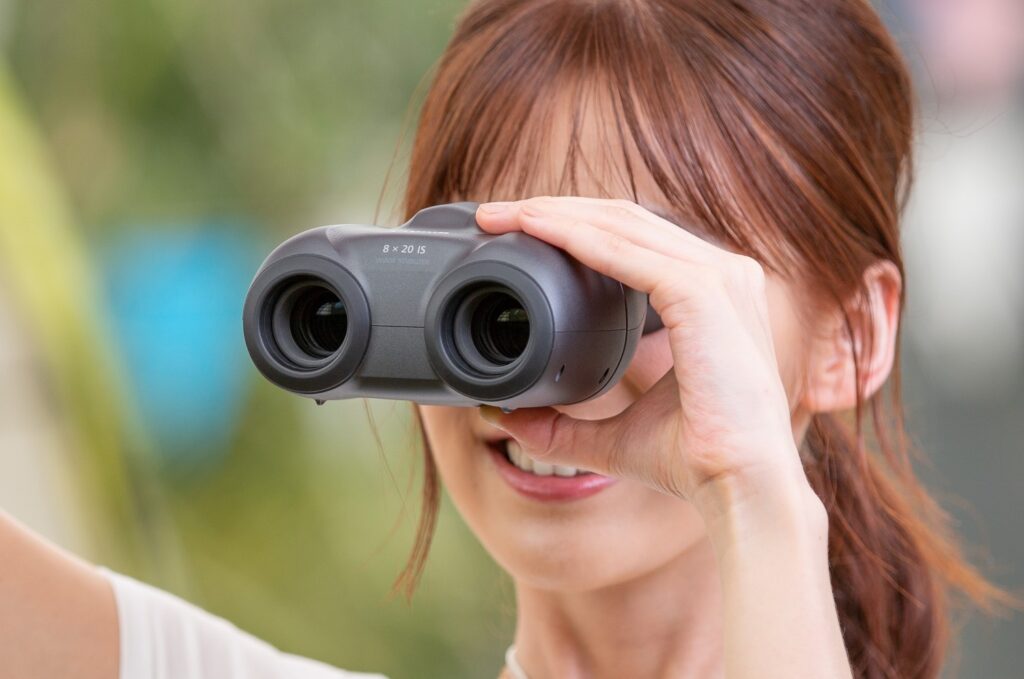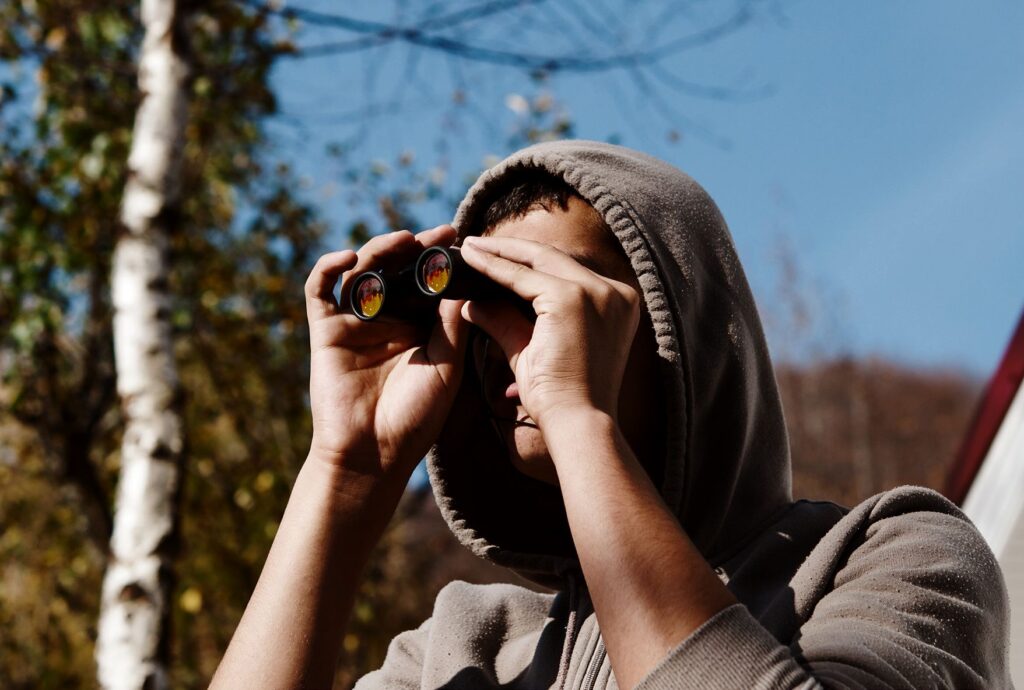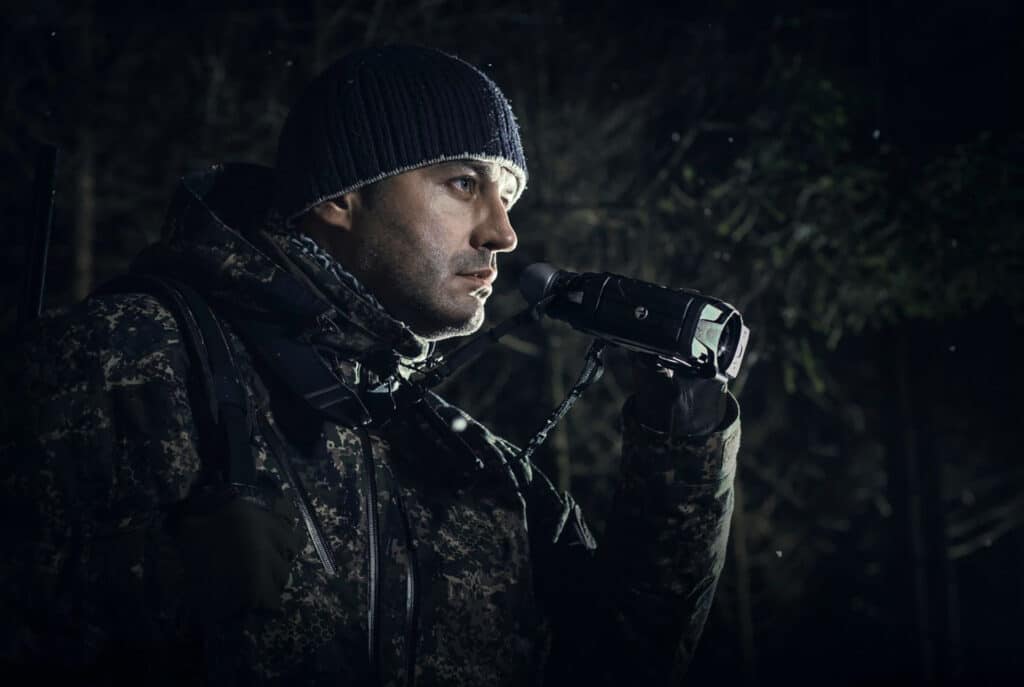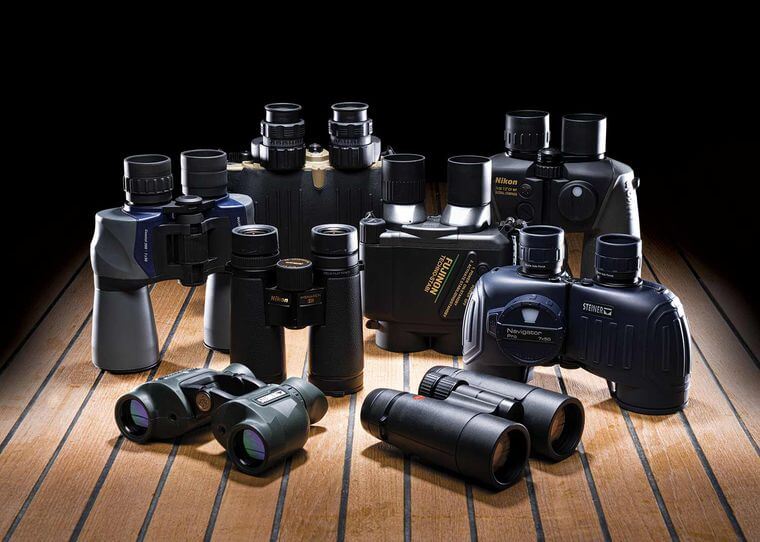

Few companies in the optics world are as popular or high-quality as Nikon. This company is a global leader when it comes to binoculars. As well as quality optics and durable materials, their models are also priced competitively, so you don’t need to spend a fortune on the best Nikon binoculars.
When choosing the models for our product reviews, we focused on some key features. These include the prism, magnification, and optical diameter since these determine how well you see whatever you’re looking for. The weight of the binoculars tells you how heavy they are to carry, especially for long distances. If a new pair of Nikon binoculars are on your list, check out our detailed reviews and buying guide for more information about the best models this brand has to offer.
More features: 8.6 mm eye relief, 2.5-5 mm exit pupil, center focus, 25 brightness index, rubber armoring, Porro prism
The Nikon Aculon A211 10-22x50mm binoculars are our Editor’s Choice because they are well-made, with amazing features that ensure crisp, clear views, no matter what you’re looking at. These include the BaK4 Porro prism system for amazing images in all lighting conditions, Eco-Glass that is free of lead and arsenic, and the unique zoom for a wide range of magnifications. The smooth central focus knob is easy to use, as are the adjustable eyecups for those wearing glasses. The Aculon A211 binos are also quite durable, thanks to the shock-resistant rubber-armored coating, which also gives you a sure grip, even in damp weather.
These Nikon binoculars are perfect for almost any activity. The lower magnification lets you study birds in your yard while the higher 22x magnification brings those farther views into focus for amazing detail. We also liked that this model is tripod-adaptable since the higher magnification can cause shaky images, which the tripod eliminates. The only issue is the lens covers, which can be attached to the strap, though not well, so you may want to tuck them in a pocket to keep from losing them when hunting, hiking, or bird-watching.
More features: waterproof, 8.2 ft focus, fixed magnification, 17.6 brightness index, extra-low dispersion, polycarbonate body, 4.2 mm exit pupil, 16.4 mm eye relief
The Nikon Monarch 7 10x42mm is another fantastic pair of binoculars, with durable features like the polycarbonate body that is as light as it is strong, as well as the O-ring seals and nitrogen purging for water- and fog-proofing. This model is closest competition to Aculon in both performance and quality. The roof prisms have phase-correction coatings for better resolution, while the ED glass lenses reduce chromatic aberrations for the clearest views possible. The prisms and lenses are also fully multi-coated for high resolution while the outer lenses include scratch-resistant coatings for better viewing. Other great features include the adjustable rubber eyecups, wide field of view, and simple center focus knob.
The Monarch 7 10x42mm model may be the best Nikon binoculars for long-distance viewing, due to the higher magnification and wide field of view. The O-ring seals prevent water from entering the binos while the nitrogen purging keeps them from fogging up inside. You’ll have crisp, clear views of anything you want to see when hiking, hunting, or just relaxing and enjoying the scenery. We loved that objective lens caps also flip up or down for less struggling and little chance of losing them. The turn-and-slide multi-click eyecups are also easy to adjust for those wearing glasses, plus the rubber makes them quite comfortable.
More features: Porro prism, 22.7 mm eye relief, 7.1 mm exit pupil, 56-72 mm interpupillary distance, 33 ft close focus, 50.4 brightness index
With a name like OceanPro, it’s no wonder these binoculars are the best option for marine viewing. They are fully waterproof, so they won’t be damaged from moisture, even if you drop them right into the water. These binoculars are also fog-proof for those humid days, with a polycarbonate body and a rubber-armored coating for durability and a firm grip with both wet and dry hands. These binoculars also feature BaK4 high-index prisms, multicoated lenses, large exit pupils, and a simple central focus knob, though we did find this last piece to be somewhat stiff for less-than-smooth adjustments.
These Nikon binoculars are part of the OceanPro line, which consists of only two models. This one is the simple version, with most of the same features as the 7×50 Oceanpro CF WP Global Compass model. The 7×50 OceanPro lacks the Eco-Glass lenses and it doesn’t include the built-in compass found on the CF WP model but it is just as durable and somewhat lighter without the extra hardware. This version also costs about half of what you’d pay for the CF WP model, so for those looking for a great pair of marine binoculars that don’t cost a fortune, the Nikon 7×50 OceanPro is a great option.
More features: 9.8 ft close focus, 6.3 brightness index, 2.5 mm exit pupil, 11.1 mm eye relief, 56-72 mm interpupillary distance, carbon fiber body, travel case included
The Nikon 10x 25mm Travelite is our best value model due to the great low price, though these binoculars still have some fantastic features found on more expensive options. They are extremely durable, thanks to the all-metal chassis, carbon fiber body, and rubber-armored coating, with an ergonomically contoured design that keeps them firmly in your hands at all times. The BaK4 Porro prism system and multi-coated optics ensure better light transmission and clear images. The Travelite binoculars weigh less than a pound, too, so carrying them at all times is easy to do.
The Travelite is the perfect pair of binos for beginners or those who don’t want to spend a fortune on their gear. They are lightweight and compact, so they can be tucked in a bag or hung on a neck strap without straining your neck or back. These binoculars also offer great views, thanks to the 10x magnification and 25mm lens diameter, which give you a decent field of view of 262 feet at 1000 yards. Bak4 Porro prisms and multi-coated lenses also ensure crisp, clear views of birds, wildlife, or scenery.
More features: 15.4 mm eye relief, 3.9 mm exit pupil, 11.5 ft close focus, 15.2 brightness index, BAK4 Porro prism
The best Nikon binoculars for stargazing need high magnifications combined with large objective lenses for better light transmission and crystal clear celestial bodies. The Nikon 18×70 AstroLuxe XL includes both of these features, as well as BaK4 Porro high-index prisms and fully coated optics for the best resolution possible. The ED glass also reduces chromatic aberration, so there is no distortion around the edges of the lenses. We did find these binoculars to be somewhat bulky and heavy to hold, which can result in shaky views, but they are tripod adaptable, which eliminates these issues.
Though the telescope is a popular choice for stargazers, a good set of binos is a more compact option that still gives you fantastic views of the stars and planets. The 18x magnification, 70mm objective lenses, and high-quality optics all work together to give you the clearest views possible. There are also other great features, like the O-ring seals, nitrogen purging, individual eye focusing, and turn-and-slide eyecups. The metal construction and rubber-armored coating ensure long-lasting use, which is essential for binoculars priced as high as these.
More features: 17.6 brightness index, 16.1 mm eye relief, 4.2 mm exit pupil, 23 ft close focus, case included, 5.5-degree FOV angle, water- and fog-proof
Those looking for the best Nikon binoculars for hunting may want to check out the Nikon 12×50 Action Extreme. They are some of the most durable binoculars we’ve found, due to the all-metal chassis, light polycarbonate shell, and rubber-armored coating. They also have an ergonomic design and non-slip grip that keep them firmly in hand. The viewing features are also high-quality, including the BaK4 Porro prism system, Eco-glass lenses, and multi-coated optics, which work together to give you the brightest, clearest views, even in low light.
The Action Extreme binos from Nikon are an exceptional choice for hunters or anyone else who plans to spend a great deal of time surrounded by nature. These binoculars are rugged, so they can handle all types of travel conditions. They also include O-ring seals to keep moisture out and are nitrogen-purged to prevent fogging, so even if you’re experiencing varying weather throughout the day, these binos won’t fail. Though it can be tricky to maintain stability, due to the high magnification and large lenses, it isn’t impossible, plus they are tripod adaptable for those long days waiting for the perfect buck to cross your path.
More features: BAK4 roof prism, 15.5 mm eye relief, 17.6 brightness index, 4.2 mm exit pupil, 13.1 ft close focus, waterproof, rubber armoring
The best Nikon binoculars for bird watching need a lower magnification and somewhat large objective lenses. The Prostaff 7S 10×42 binoculars meet these standards, plus they have a variety of other features that make them a favorite for anyone trying to spot that rare winged wildlife. These binos are compact and lightweight, though still durable, thanks to the rubber armor, waterproof body, and nitrogen-purging to prevent fogging. The BaK4 roof prisms include high-reflection mirror coatings and phase-correction coatings, which increase brightness and resolution. All of the optics are also fully multicoated, so any bird you see is as clear as if it was sitting right in front of you.
These binoculars are perfect for bird watchers or those who just enjoy taking the scenery that nature has to offer. As well as the quality optics that offer high resolution, fantastic light transmission, and crystal-clear images, they also have several features that make them a great option for beginners and experts alike. The center focus knob and turn-and-slide eyecups are both easy to adjust, even in a rush. The only issues that we noticed were with the accessories, including the inferior neck strap and low-quality eye caps, though these can be replaced if needed.
More features: travelling case included, 4.6-degree FOV angle, 13 mm eye relief, 3.1 mm exit pupil diameter, 13.1 ft close focus
These binoculars aren’t called Sportstar by accident. They are the best Nikon binoculars for sporting events, bringing the action into focus, no matter what you’re watching. Our favorite feature is the easy-to-use zoom, which consists of 4 different magnification options that you can select from, depending on what you want to see. You can use the lower magnifications to see more of the action and the higher settings for close-up views of players, racecars, or anything else. These binoculars are also compact, with foldable sides, and weigh only a pound, making them easy to transport to any event on your calendar.
These binoculars are great for those who want to see the sporting events they paid their money for. Even in the nosebleed sections, these binoculars still provide a fantastic view of football or baseball games or racing events, as well as concerts, plays, or any other form of entertainment you prefer. As well as the zoom magnification options and compact size, these binos are also durable enough to handle regular travel. The multicoated optics, turn-and-slide eyecups, and central focus knob are also handy features that ensure comfortable use, high resolution, and increased brightness.
More features: BAK4 roof prism, 6.3 brightness index, rubber-armored, water- and fog-proof, 2.5 mm exit pupil, 10 mm eye relief, 11.5 ft close focus
If you’re interested in the best Nikon binoculars for wildlife, the Trailblazer 10×25 is a good option. These come with a budget-friendly price and an array of features that make them durable and portable for checking out any animal on your list. These binos have a sleek, lightweight body that folds down during travel and storage, plus it is rubber armored, waterproof, and fog-proof. The Eco-Glass is free of arsenic and lead and all of the optics are multicoated for increased brightness, clarity, and resolution. The twist-up eyecups are also easy to adjust for those wearing glasses.
The Nikon Trailblazer 10×25 is a great pair of binoculars for anyone who loves to spot all types of wildlife, whether they are birding in their yard, spotting a deer when hunting, or just trying to catch a glimpse of what’s moving in the bushes during a hike or camping trip. They are portable, light, and work well, all without costing you a fortune. Of course, these binos aren’t perfect. We found the focusing mechanism to be poor quality and sloppy to use and the lens caps don’t fit well and can’t be attached, so there is a high risk of losing them. If you can overlook these flaws, you’ll likely love this pair.
There are a wide variety of binoculars available from Nikon, with varying features to choose from. If you aren’t sure what to look for in these areas, we can help. Our detailed buying guide covers all the features binos have to offer and what activities they’re best for, so you can make the most informed decision possible.
Nikon was founded in Tokyo, Japan in 1917, beginning with optics and developing its first pair of binoculars in 1921. It wasn’t long before other optical devices were added to their line, including microscopes, telescopes, cameras, and projectors. Their products are sold around the world, making Nikon one of the most popular brands around, due to their consistent technological advances, quality products, and their support for medical research. Their dedication to their principles of trustworthiness and creativity is unchanging, even today, which is why this brand focuses on progress, diversity, and positive changes in the world.

Binoculars have a wide range of uses. They can help you spot those rare birds when bird watching, pick out the perfect deer when hunting, or just give you a better view of the scenery on a hike or camping trip. Binoculars are also handy for fishing or whale watching or even playing golf, to help you plot your shots. You can use any type of binoculars for these activities, from a simple pair like the Nikon Trailblazer 10×25 to the best rangefinder binoculars that include lasers, time calculation, and displays for higher precision and more accurate accounts of anything you’re looking at.
If you’re unsure of how to pick the best Nikon binoculars, the following sections can help. They cover all of the features that binoculars have to offer, so you can make the most informed decision possible when choosing your next pair.
The prisms in a pair of binoculars work with the objective and eyepiece convex lenses, which create an inverted image, and flips it so that it looks upright to your eyes. There are two types of prisms to pick from.
Roof prisms are smaller, with a roof-shaped surface, allowing for a more compact and lightweight pair of binoculars. Their design also ensures that the objective lenses and eyepieces are placed in a straight line for a slimmer, travel-friendly pair of binoculars.
Porro prism systems use four prisms inside the binoculars, with two on each side with more reflective surfaces. This design ensures better light transmission, though the bent optical path takes up more space. The eyepieces will be closer together while the objective lenses will be farther apart, so the binoculars aren’t as streamlined.
There are two numbers displayed on any pair of binoculars. The first is the magnification, which tells you how much the image will be magnified when looking through the eyepieces. For instance, if you’re buying the best 7×35 binoculars, the 7 means that the image will be magnified 7 times, while a pair of 12×50 pair will magnify the image 12 times. Though higher magnifications will create larger images, they also make it more difficult to maintain a steady view since they will pick up any minor movement as you’re looking through them, so a tripod may be needed for long-distance viewing.
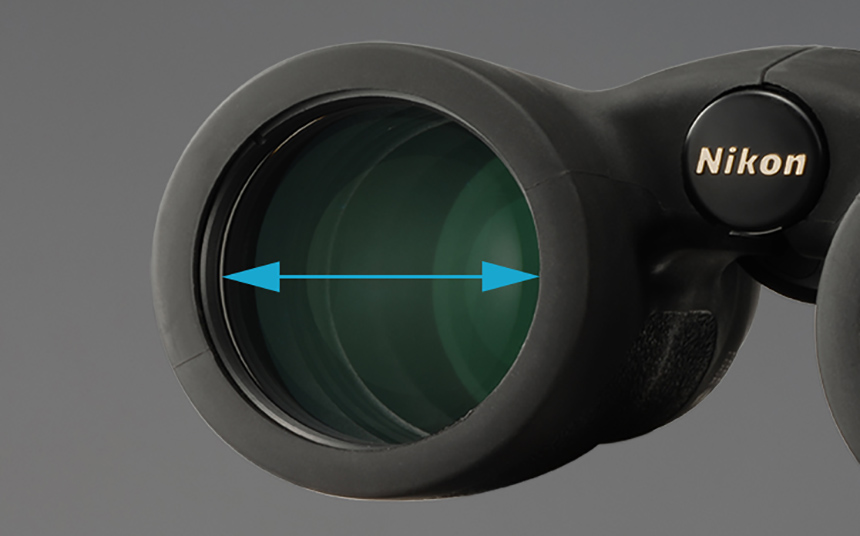
The optical diameter refers to the size of the objective lenses. These can vary from a somewhat compact 25mm to the huge 70mm of the Nikon 18×70 AstroLuxe XL binoculars. The larger the lenses, the better the light transmission for brighter views. Of course, those huge lenses also add width and weight to the binos, so you won’t get a compact pair unless you go for smaller lenses. Smaller lenses are also better for activities like birdwatching, hiking, or camping, while the larger lenses are ideal for stargazing or hunting when you’re dealing with low-light conditions.
The field of view refers to how wide of an area you can see when looking through the binoculars. It is directly related to the magnification since lower magnification gives you a wider FOV while a higher magnification narrows the area. When looking for small or moving objects, a wider FOV makes them easier to spot, plus it increases light transmission for brighter views. For scenic views, a larger FOV will likely be preferred.
The eye relief on a pair of binoculars is the distance between your eye and the eyepiece while keeping the entire FOV visible as you’re looking through them. Though those without glasses likely won’t notice any issue with the eye relief, those who wear spectacles will need to choose a pair with an eye relief of 11mm or higher.
Adjustable eyecups will also be a must for glasses wearers since this feature allows you to alter the eye relief as needed.
Most binoculars use a central focus wheel to adjust the view you’re getting when you look through the lenses. This is designed to focus both of the barrels at the same time. There will likely also be a diopter, which adjusts the focus on only that barrel, so those with varying eye strengths can still get the perfect views. This piece may even lock in place to avoid accidental alterations to your focus. Some binoculars also include a close focus, which tells you the shortest distance between the object and the binoculars that you can focus on clearly. For instance, the Nikon Prostaff 7S 10×42 has a close focus of 13.1 feet, so anything at this range will be crystal clear.
The exit pupil is determined by dividing the objective lens by the magnification, so 8×42 binoculars have an exit pupil diameter of 5.3mm. This tells you how large the circle will be when you’re looking at a bright light through the binos when they are held about 30cm from your eyes. The larger the exit pupil diameter, the brighter the view will be, which is a must for low-light conditions.
Most binoculars are made of some type of plastic for the shell, usually polycarbonate since this material is lightweight and durable. There will likely also be some type of coating to increase durability and improve the grip. Rubber armoring is the main choice for this coating in the Nikon binos we’ve reviewed here for those reasons. The stronger the shell, the longer the binoculars will last.
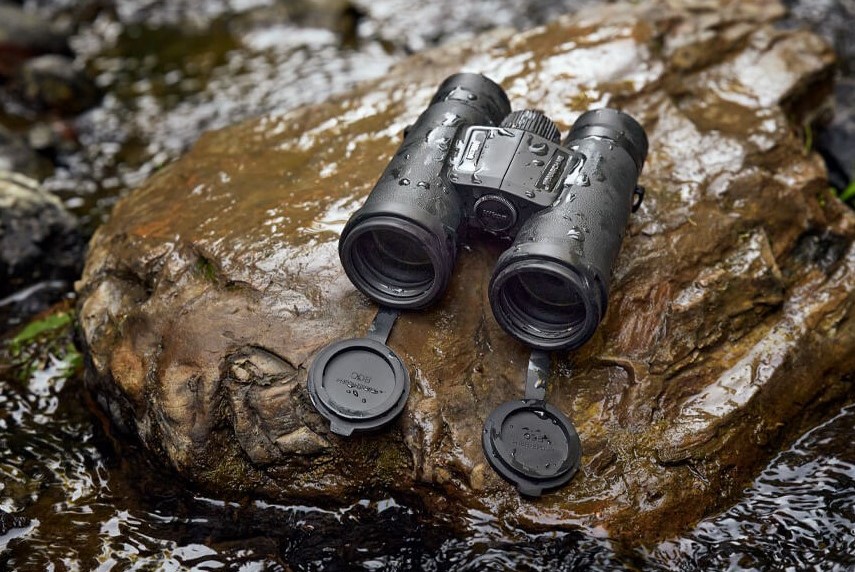
Binoculars are designed for outdoor use, though some of them are more durable than others. Models like the Nikon 10x 25mm Travelite include a metal chassis, which increases durability, especially if your binos are dealing with some rough handling. The stronger the body, the less chance there is of the binos breaking if they are knocked about or dropped.
Weather resistance is something else to consider. If you’re looking for the best binoculars for whale watching, you’ll likely be dealing with wet conditions and possible submersion if the binos are dropped. The better the waterproofing, the less chance of damage if the binos get wet. For those dealing with changing weather conditions and humidity, gas purging is also a must to prevent fogging inside the binoculars.
The weight of a pair of binoculars won’t matter if you’re just taking a quick peek now and then. Those spending the day scanning for birds or deer or who are carrying them around their neck during a hike will want to stick to a lighter pair. Keep in mind that lighter binos may sacrifice features, like larger lenses or better prism systems.
Not every product we buy works as well as we expect it to, due to defects with the parts included or during the manufacturing process. Luckily Nikon offers a lifetime limited warranty on all of their optical systems, a 7-year limited warranty on the non-optical system components, and a 1-year limited warranty on any electrical components of all of their binoculars.
There are some extra features included with a few of Nikon’s binoculars worth noting. For instance, the Nikon Monarch 7 10x42mm features extra-low dispersion glass, also called ED glass, which is specially formulated to reduce chromatic aberration.
The Nikon Aculon A211 10-22x50mm includes a zoom function, which allows you to alter the magnification as needed, depending on what you’re looking at.
Lens coatings are also handy since they reduce reflections. There are coated, fully coated, multi-coated, and fully multi-coated options. The more coatings there are, the more surfaces they are applied to and the better the viewing.
Many binoculars also include extras like carry cases, carry straps, belt loops, or cleaning materials for added convenience.
Nikon binoculars are some of the highest-rated available, though you don’t have to spend a fortune for a decent pair. They range from about $100 to a couple thousand, so you can get the perfect one to fit into your price range.
With so many Nikon binoculars available, it can be hard to pick a favorite, though we do have a few we’d recommend.
Our top choice is the Nikon Aculon A211 10-22x50mm, due to features like the Eco-Glass lenses, BaK4 Porro prism system, and multilayer optics coatings. The rubber-armor coating on the body, smooth central focus knob, and tripod adaptability are also handy to have.
The Nikon Monarch 7 10x42mm is another great option since it includes a durable polycarbonate body and ED glass, and is both water- and fog-proof. It also features adjustable eyecups, roof prisms with phase correction coatings, and scratch-resistant coatings on the outer lenses.
Those on a budget may want to consider the Nikon 10x 25mm Travelite. As well as the low price, these binoculars include an all-metal chassis, a carbon fiber body, rubber armoring, and multi-coated optics. It is also lightweight at 0.9 pounds, making it a great choice for hiking or travel.

